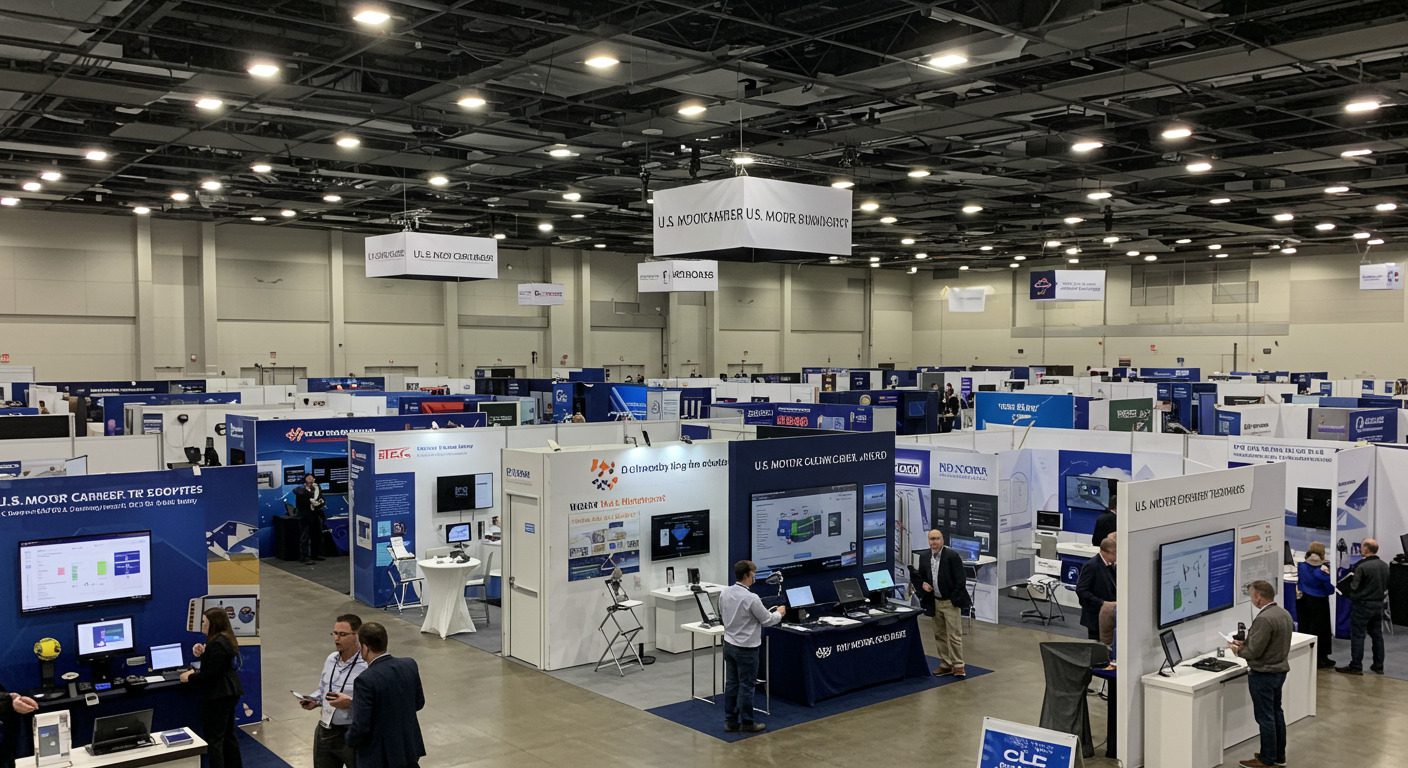Maîtriser les Dix Principaux Problèmes de l'Industrie grâce à la Gestion de la Fatigue – Première Partie

By Rodolfo Giacoman, Fatigue Specialist, Commercial Vehicle Safety Alliance
This is part one of two. Part two will be published in the fourth quarter 2024.
You may be surprised to learn that driver fatigue has not been explicitly identified as one of the top 10 industry issues over the last decade, per the annual American Transportation Research Institute (ATRI)“Critical Issues in the Trucking Industry” report, also known as the “Top Industry Issues.” (View the 2023 edition, which includes a table ranking the top issues from 2014-2023 online: www.truckingresearch.org/atri-research/top-industry-issues). One may argue that when hours-of-service (HOS) regulations, the electronic logging device (ELD) mandate, or driver health and wellness concerns make the Top Industry Issues list, they are stand-ins for driver fatigue. However, the last time HOS and ELD made ATRI’s annual list was in 2019. Driver health and wellness were last identified in 2018. Does that mean driver fatigue is not a top industry issue, thus fatigue management should pack its bags?
Absolutely not. The industry would be better served by recognizing that driver alertness is what holds together the various components of safe, efficient and profitable commercial transport. So where is the disconnect? You may have heard of “Maslow’s hammer,” a term based on famous American psychologist Abraham Maslow’s observation in 1966: “If the only tool you have is a hammer, it is tempting to treat everything as if it were a nail.” In 2003, historian Robert Kagan wrote a corollary to Maslow’s hammer: “When you don’t have a hammer, you don’t want anything to look like a nail.” Kagan’s corollary may illustrate why driver fatigue is not explicitly identified as a top industry issue: the industry has not standardized a fatigue management program (FMP) – the hammer – so it does not identify driver fatigue – the nail – as a significant issue.
According to the North American Fatigue Management Program (NAFMP) at nafmp.org, an FMP requires having both of the following in place:
- A Safety Culture that places alertness as a non-negotiable value through education, training and fostering partnerships with all those involved in the supply chain.
- A Fatigue Risk Management System (FRMS) composed of several predictive/proactive/reactive risk identification/control processes that, at minimum, include sound scheduling practices, a sleep disorder management program and fatigue detection technologies.
While you won’t find driver fatigue among the 2023 Top Industry Issues, we have illustrated how it affects every aspect of the industry, along with how a solid FMP can directly improve each of 10 Top Industry Issues. Check out the first five below and stay tuned to see the remaining five in the Q4 2024 Guardian.
The NAFMP Module courses referred to below are available for free at lms.nafmp.org
1. The Economy
- Improve Safety and Reduce Crash Costs
- Fatigue is a significant factor in many crashes. By implementing an FMP, motor carriers can reduce the number of crashes, leading to lower costs associated with vehicle repairs, insurance premiums, legal fees medical costs and driver retention. Reduced crashes also mean fewer injuries and fatalities, which lowers the company's healthcare costs and supports the overall well-being of drivers.
- Increase Productivity and Efficiency
- Well-rested drivers are more alert and productive, leading to more efficient operations resulting in faster delivery times and better-quality service. Fewer crashes and health issues also mean less downtime for vehicles and drivers, keeping more trucks on the road and generating revenue.
- Lower Operational Costs
- Fatigue can lead to poor driving practices, which increase vehicle wear and tear and fuel consumption. Proper fatigue management can help maintain vehicles in better condition and promote more efficient driving behaviors, reducing maintenance, repair, and fuel costs.
- Encourage Greater Compliance and Penalty Avoidance
- Adhering to HOS regulations helps carriers avoid fines and penalties associated with non-compliance. This can also prevent lower safety ratings and a potential loss of customers. A strong safety record enhances the reputation of the motor carrier, potentially leading to more business opportunities and partnerships.
- Enhance Employee Retention and Satisfaction
- Dispatchers using sound scheduling practices suggested by the NAFMP Module 9 are less likely to overwork drivers, who, in turn, are more likely to be satisfied with their jobs. This leads to higher retention rates, reducing costs and downtime related to hiring and training new drivers. Using FMP best practices to prioritize driver health can also decrease absenteeism and long-term health issues, ensuring a more stable and reliable workforce.
- Influence Broader Economic Factors
- A reliable supply chain supports consumer confidence. Fostering cooperation between carriers, shippers, receivers and brokers, as promoted in NAFMP Module 6, can reduce disruptions to the supply chain. Efficient and safe transportation services ensure that goods move smoothly, supporting various sectors of the economy, from manufacturing to retail, and maintaining consumer confidence and spending.
- Strengthen Adaptability and Resilience
- A motor carrier with an FMP is better equipped to handle economic uncertainties. Efficient operations and cost savings provide a buffer against economic downturns, such as those caused by inflation, rising interest rates or reduced freight demand.
2. Truck Parking
- Better Utilization of Parking Resources
- An FMP calls for scheduling drivers' rest periods in advance based on practices described in the NAFMP Module 9. These programs often use data to predict when and where drivers will need to rest, enabling carriers to choose routes with adequate parking and adjust schedules to avoid resting when parking is scarce. It can also help distribute parking demand more evenly and better use underutilized parking spots.
- Enhanced Compliance and Safety
- Proper rest period planning prevents last-minute parking searches, reducing the likelihood of parking in unsafe or unauthorized areas. Knowing in advance where they will rest also reduces driver stress and helps them adhere to HOS regulations, improving overall road safety.
- Strategic Investment and Advocacy
- Motor carriers with FMPs can collect data on parking shortages and use this information to advocate for their drivers. With this data-backed approach, carriers can partner with industry stakeholders and government agencies to support parking expansion initiatives by demonstrating a commitment to driver safety and regulatory compliance.
- Integration of Technology
- FMPs often integrate with technologies – such as those addressed in the NAFMP Modules 9 and 10 – that provide real-time updates on parking availability. This helps drivers reduce the time spent searching for a spot. Some services allow parking reservations, ensuring drivers have a guaranteed place to rest. More efficient parking management also reduces the time and fuel wasted searching for parking.
3. Fuel Prices
- Improved Fuel Efficiency
- Well-rested drivers are more likely to adhere to best driving practices that enhance fuel efficiency, such as maintaining steady speeds, avoiding excessive idling and using cruise control. Conversely, fatigue can lead to aggressive driving behaviors like rapid acceleration and harsh braking, which increase fuel consumption. The driver education provided in NAFMP Module 3 can help minimize such behaviors.
- Better Route Planning and Reduce Idling
- FMPs include route and rest stop planning, which helps avoid idling in congested areas and wasting fuel and time on unnecessary detours.
- Preventative Maintenance and Vehicle Health
- Routine maintenance checks can be performed during the rest periods scheduled as part of an FMP. Well-maintained vehicles operate more efficiently, conserving fuel. Regular maintenance and attentive driving can help detect and address mechanical issues that might otherwise lead to increased fuel consumption, such as problems with the engine, tires or fuel system.
- Enhanced Driver Health and Productivity
- Well-rested drivers are healthier, more alert, and can complete their routes faster and with fewer delays. Conversely, fatigued drivers are prone to inconsistent performance, leading to suboptimal fuel use.
- Use of Technology
- Incorporating technology to monitor driver behavior and vehicle performance, as described in NAFMP Module 10, provides real-time feedback and coaching to help drivers improve their fuel efficiency.
- Better Cost Management and Budgeting
- With efficiency gains from FMPs, motor carriers can allocate fuel budgets more effectively. Savings from reduced fuel consumption can be redirected to other operational areas. Companies can implement incentive programs that reward drivers for fuel-efficient driving, using FMPs to support beneficial behaviors. Improved fuel efficiency also acts as a buffer against the volatility of fuel prices.
4. Driver Shortage
- Enhance Driver Retention and Attraction of New Drivers
- A safety culture that follows the principles of the NAFMP Module 2 demonstrates a commitment to drivers' well-being, leading to higher job satisfaction and loyalty among drivers and reducing turnover rates. Drivers with predictable schedules and adequate rest periods can maintain a better work-life balance, making them more likely to stay with the company. Additionally, a safe and supportive work environment can be a crucial differentiator in a competitive job market, helping attract new drivers.
- Reduce Operational Stress and Increase Operational Efficiency
- Good FMPs reduce the likelihood of fatigue-related crashes, and a safer working environment reduces stress for drivers, making the profession more appealing and sustainable. With an FMP, scheduling also becomes more predictable and manageable, alleviating stress related to uncertain work hours and excessive workloads. This also allows carriers to utilize the workforce better, optimizing driver capacity without overburdening individuals. Maintaining a loyal driver base reduces the need for over-hiring to compensate for high turnover.
- Improve Driver Health and Performance
- Adequate rest leads to better physical and mental well-being for drivers, reducing absenteeism due to health issues such as the common sleep disorders addressed by the NAFMP Module 7 and 8, ensuring a more reliable and productive workforce.
- Compliance and Regulatory Benefits
- Companies that are seen to be improving employee morale, road safety and profits can influence industry standards and practices, positioning themselves as leaders in driver welfare and operational excellence.
5. Driver Compensation
How drivers are compensated can significantly impact their levels of fatigue. Each compensation model creates various incentives and pressures affecting driver behavior. Some models are better suited for reducing driver fatigue than others, and all benefit from careful evaluation and management to incentivize periods of rest and other safe driving behaviors.
- Mileage-Based Pay
- Drivers paid by the mile may be incentivized to drive longer hours to maximize their earnings, which can result in drivers pushing themselves beyond safe limits. Drivers might take shorter or less frequent breaks to maximize miles, leading to inadequate rest and higher fatigue levels. To avoid traffic and maximize miles, drivers might opt to drive during late-night or early-morning hours, increasing fatigue due to circadian rhythm disruptions.
- Hourly Pay
- Hourly pay can encourage drivers to strictly adhere to regulated work hours and take adequate breaks, reducing fatigue risk. Without the pressure to cover more miles, drivers may drive at safer speeds and take the necessary time for rest and recovery. However, if not properly managed, hourly pay could lead to increased operational costs for the carrier, indirectly pressuring drivers to work more hours.
- Salary-Based Pay
- Drivers with stable salaries have predictable earnings and are less likely to feel pressured to drive excessive hours. Salaried drivers are more likely to comply with HOS regulations and take regular breaks, as their income is not directly tied to the distance driven. For optimal results, management must clearly communicate that drivers are expected to fully disengage at the end of their shift and that there is no expectation for drivers to be available beyond standard hours.
- Performance-Based Bonuses
- Bonuses based on performance metrics such as delivery times or miles driven can incentivize drivers to work longer hours and drive faster, increasing fatigue risk. Drivers might skip breaks or drive during unsafe conditions to achieve performance targets. Well-structured performance bonuses can reward safe driving and adherence to rest periods, balancing the incentives.
- Per Diem Pay
- Per diem pay can encourage drivers to maximize their working hours within a day to make the most of their daily rate, potentially leading to fatigue. Drivers may be tempted to extend their working hours to increase their daily earnings, compromising their rest. Attentive scheduling and monitoring can mitigate the risks associated with per diem pay, ensuring drivers take necessary breaks.
- Load-Based Pay
- Drivers compensated per load may feel pressured to work too quickly and complete as many loads as possible, which often leads to longer working hours and shorter rest periods.
Get the Hammer Now
While I admit to a cognitive bias for relying on an FMP for motor carriers to mitigate the industry issues identified by ATRI, my bias does not negate FMP’s efficacy. This multi-tool can fix many industry issues when applied properly. Get started with the FMP Template at www.bit.ly/fmp-template.
Please return to the 4th Quarter 2024 Guardian for part two, where we will highlight what FMPs can do for the remaining five top issues identified by ATRI.
Contact me if you are interested in a free fatigue management consultation, presentation or course. As always, thank you for sending your questions and feedback at rodolfo.giacoman@cvsa.org.
More Reading

Investir dans les Solutions de Gestion de la Fatigue

